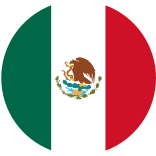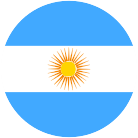What is the Day of the Dead (Día de los Muertos)?
- Latino Foods

- Oct 31, 2023
- 4 min read
Celebrated on November 1st and 2nd, and being added to the UNESCO's list of Intangible Cultural Heritage of Humanity in 2008, the 'Day of the Dead' or Dia de Muertos in Spanish, is the Mexican holiday by excellence and is a tradition full of symbolism, emotions and a lot of history. It is believed that during these two days, the line between the living and the death blurs out and allows the deceased people to come back to the land of the living to celebrate with their loved ones who have food, altars, water, among other things decorating the dead person's grave so they can all have one last meal together.

For starters, and contrary to many people's believes, the Day of the Dead holiday is not a celebration of death, but a celebration of life, where besides reminding and honouring all the loved ones that have passed away it is also a reminder itself of how precious but short life is, and how we should all celebrate each moment of it.
Origin
The indigenous people (Aztecs/Mexicas) who inhabited the Centro American lands long before the Spanish conquest, had a different view of death that differed from what we believe now. For them, death wasn't a sad event but the opportunity to go to a different realm where one can become one with the universe and fulfil their 'life purpose'. Aztecs had not one but many celebrations of the death and one of them occurred between September and November after the year's harvest and coincidentally these dates concurred with the Prehispanic celebration of "Todos Los Santos" or "All Hallow's Eve" on November 1st, so after the Conquest of America these two holidays kind of mixed, giving birth to what we now know as the Day of the Death.

On November 1st it is believed that the souls of the dead children come to the lands of the living, that's why this day is also called "Day of the Little Angels" and the names of the departed children will often be written on a sugar skull.
Consequently, on November 2nd the celebrations shift to honour the lives of the departed adults. The night is filled with laughter and fun memories, much like the night before.
Traditions
This holiday is full of light, bright colours, food, fun, among many other happy elements that encourage a visit from the departed family members or friends to the places they're being celebrated in. Let's see then, how people that celebrate the Day of the Dead prepare and spend this beautiful holiday.
Ofrendas (Offerings)

While the most recognizable aspects of Day of the Dead are the representations of skulls and skeletons, the tradition that holds the most meaning is the Ofrenda (Spanish for offering). The Ofrenda is what the whole celebration is about; it’s a collection of offerings dedicated to the honoured person.
A brightly coloured Oilcloth covers the table (that serves as an altar) and on top of that sits a collection of photographs and personal items of the departed person. The lower portion of the altar is where the offerings are placed, from traditional Mexican cuisine to other items that represent the honoured person’s particular tastes. On the case of children's Ofrendas, they decorate it with the departed child’s favourite snacks, candies, toys, and photographs while in the Adult's Ofrendas you can find tequila, mezcal, among other Mexican liquors.
Furthermore, the Ofrendas also contain:
Flor de Muerto (Mexican Marigolds): That is believed to guide the deceased person back home because of its fragrance.
Candles: Christian ritual indicates that light brings hope to souls; they also help them to get to the homes of their relatives.
Water: A glass of freshwater will quench the thirst of the deceased after the long journey home.
Sugar Skulls and Other Desserts: The Ofrenda can look prettier if you put sugar or chocolate skulls on it, along with other desserts such as tack pumpkin.
Calaveras (Skulls)
Calaveras are ubiquitous during the Day of the Dead. The skulls are often drawn with a smile as to laugh at death itself. They take many forms such as sugar candies, clay decorations, and most memorable: face painting. Sugar skulls are decorated and placed on ofrendas of loved ones. A Calavera, or sugar skull, is a decorative skull made (usually by hand) from either sugar (called Alfeñiques) or clay which are used in the Mexican celebration of the Day of the Dead.
Popular Representation
The amount of symbolism and colours that distinguish this holiday, make it easy to represent on the big screen. There are a lot of movies that use this celebration as their plot such as "The Book of Life" and "Spectre" with James Bond. But it is "Coco" the one that stands out among the others as a perfect representation of a story about the Day of the Dead representing places of the Mexican culture and tradition at centre stage in the best possible way.

The plot of this film follows the story of Miguel, a young boy, when he finds that he has had enough of his family’s longstanding ban on music, he ventures into the Land of the Dead with the hopes of finding a great-great-grandfather of his, who had left his family to follow his dream of being a legendary singer.
As you can see, this holiday is full of Mexican vibes of happiness, celebration, joy and amazing food! Give yourself a chance to know more about this beautiful celebration of life and don't forget that
"Our dead are never really dead to us, until we have forgotten them"











Comments